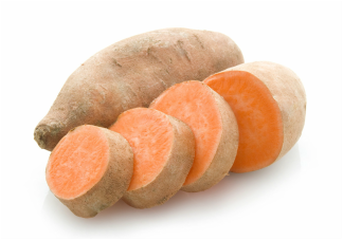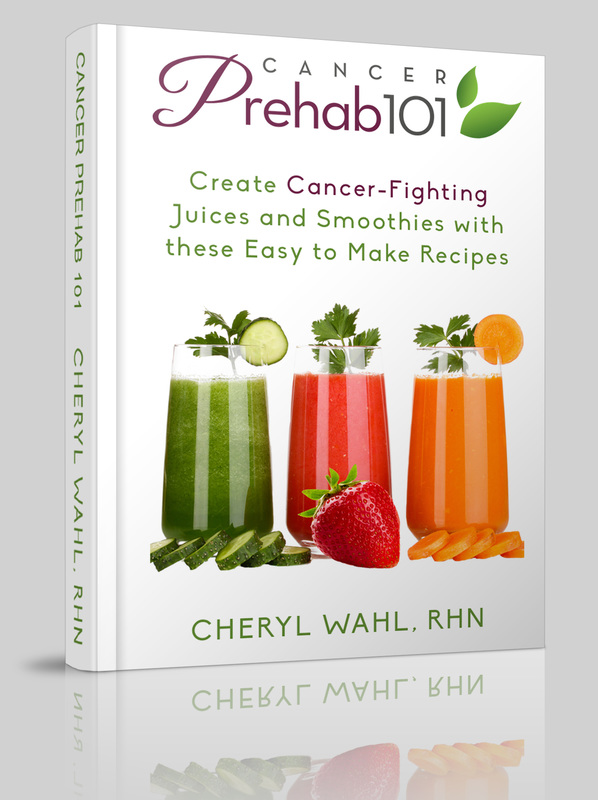 Christmas is a time for sharing, caring, and visiting family and friends, but what if you don’t feel like doing any of those things? You have cancer and just want to be alone. All you really want for Christmas is for the cancer to be gone. How do you get through the holidays when you’re not feeling cheery? How do you enjoy the Christmas festivities when you’ve been told to watch what you eat and drink? How do you prepare for Christmas so that you don’t feel stressed and overwhelmed? Here are six recommendations to successfully get through the holiday season happier and healthier. 1. Shop online – The thought of visiting a mall full of germs, with your lowered immune system, kind of freaks you out. This year, take a break from bacteria and visit the Internet instead. You can get anything you wish for online. If the gift doesn’t fit or isn’t quite right, the purchase policy probably allows you to exchange it in store. Gift cards/certificates are great too. You can enlist the help of a friend or family member to go out and buy them for you. Remember all those people that asked, “What can I do to help?” Take them up on the offer. Not only will it keep you safe from the exposure to potentially harmful germs but also your loved ones will feel good knowing they are helping you. 2. Limit sugary treats – I am the first to admit that I love my Mum’s holiday baking. It wouldn’t be Christmas without it. However, when battling cancer, eating sugar and white flour is another story. Glucose is the #1 fuel for the cells in your body and that includes cancer cells. It is imperative that you reduce your consumption, or cut it out altogether. However, if there is a traditional cookie or bread that fills you with joy during the holidays, have it. There is something to be said about feeding your soul. My recommendation, though, is to take a few moments in a comfy chair and truly savor not only the flavor but also the memories behind it. 3. Eat extra veggies and fruit – As you go through cancer treatment, whether it’s chemotherapy or radiation, your immune system takes a beating. You need to build up your immune system as best as you can. The main nutrients you need for this are Vitamins A, C and E, as well as zinc and selenium. There are many supplements on the market today that have these immune building ingredients, but I always advise my clients to eat a rainbow of real fruit and vegetables every day. And please make sure it’s organic! These foods contain beta-carotene and carotenoids that convert to vitamin A in our body: Tomatoes, carrots, squash, sweet potato, pumpkin, apricots, cantaloupe, tangerine, asparagus, broccoli, kale, collard greens, beets Vitamin C rich foods: peppers, tomatoes, strawberries, raspberries, sweet potato, peppers, oranges, papaya, cantaloupe, broccoli, kale, Brussels sprouts, kiwi fruit, blueberries Vitamin E: red peppers, carrots, pumpkin, mangoes, papaya, broccoli, mustard and turnip greens, spinach, swiss chard, nuts, sunflower seeds Zinc: Oysters, poultry, beans, nuts, whole grains Selenium: Brazil nuts, tuna, poultry, whole grains For tips and delicious recipes to bring more veggies and fruits into your diet, check out my eBook titled, “Cancer Prehab 101: Juices and Smoothies”. 4. Avoid alcohol – The holidays are often a gathering of friends and family, and it often involves a glass of wine or spirits. However, with cancer it is critical to eliminate alcohol. Your liver is already going through hell trying to metabolize the cocktail of drugs introduced to your body. It doesn’t need more trying to eliminate alcohol. Again, if a glass of wine at Christmas dinner is an important tradition to you, then have a glass, but limit it to one. Then drink sparkling water and pure cranberry juice. It is delicious and festive and you’ll be doing your body a favor. 5. Reduce animal protein consumption –The bestselling book “The China Study” by T. Colin Campbell, Ph.D., examines the relationship between the consumption of animal products (including dairy) and chronic illnesses such as coronary heart disease, diabetes and cancers of the breast, prostate and bowel. The authors conclude that people who eat a plant-based/vegan diet—avoiding all animal products, including beef, pork, poultry, fish, eggs, cheese and milk, and reducing their intake of processed foods and refined carbohydrates —will escape, reduce or reverse the development of numerous diseases. They write that "eating foods that contain any cholesterol above 0 mg is unhealthy." Campbell also goes on to say that animal protein fuels cancer that already exists. Numerous studies also show animal protein cooked at high temperatures form carcinogenic compounds, which, as the name states, contribute to cancer risk. Consume plant-based proteins as your main source. They provide the antioxidant effects of vegetables to help offset the effects of the traditional turkey you eat at the Christmas dinner table. 6. Spend time with loved ones – You may feel like crawling under a blanket and forgetting about the world. You could be experiencing feelings of anger, vulnerability, sadness, fear of recurrence or death, depression, anxiety or panic. This emotional distress can affect your ability to carry out everyday activities. First of all, know that these feelings are common, and it’s okay to feel the way you do, but keeping them to yourself is not a healthy way to deal with them. Being in the company of others and talking about what you’re feeling does wonders for the soul. Whether it’s with a support group or your doctor, with family and/or friends, talk with whom you feel most comfortable. And when someone says, “What can I do to help?” let them do something for you. Your loved ones care about you and want to offer support. Come up with a list of things that you really could use help with: a ride to the doctor, making meals or snacks (like muffins), going to the grocery store, yard work, housecleaning or just coming over for a visit to talk about anything else but your cancer. Do what you feel comfortable doing, not what others expect you to do, and don’t feel guilty about your decisions, only you know what’s really best for you. As you move through the holiday season surviving cancer, know that your focus on wellness, tradition and friends and family, will turn surviving into thriving. Making simple changes can feel overwhelming, finding a starting point is often a challenge. If you or anyone you know needs assistance making these diet and lifestyle changes, I am a Certified Professional Cancer Coach and can help. We can meet one-on-one, chat on the phone, or connect through Facetime or Skype. Call me at 778-836-3831 or send an email to [email protected]. In good health, Cheryl Wahl, RHN Certified Professional Cancer Coach
0 Comments
The origin of the sweet potato is thought to be in either Central America or South America. In Central America, they were domesticated at least 5,000 years ago and in South America, remnants dated as far back as 8000 BC have been found.
Although the soft, orange sweet potato is often called a "yam" in parts of North America, the sweet potato is botanically very distinct from a genuine yam, which is native to Africa and Asia. Despite this confusion, the nutritional content is very similar. As a root vegetable, it is a powerhouse of nutrients for the winter season, helping to build the immune system. Nutritional Value Top Nutrients in Sweet Potato You'll get a respectable 4 grams of fibre and 3 grams of vegetable protein in one medium sweet potato. Flavorful and filling, a baked sweet potato is only 103 calories - and fat-free and low in sodium to boot! The sweet potato really shines when comes to the B vitamin niacin, vitamin B-6 and vitamin A. For about 100 calories, you’ll get 69% of the RDA for niacin, 25% of the RDA for vitamin B-6 and 122% of the RDA for vitamin A in the form of beta-carotene. Sweet potatoes also provide some calcium, iron, potassium and vitamin E. Here is the nutrition information for on medium baked sweet potato with the skin on: Nutrient name & amount Protein 2.29 g Total Fat 0.17 g Carbohydrate 23.61 g Energy 103 kcal Fibre, total dietary 3.8 g Calcium 43 mg Iron 0.79 mg Potassium 542 mg Sodium 41 mg Beta carotene 13.12 mg (Source: Canadian Nutrient File, 2007) Top Phytochemicals in Sweet Potato Sweet potatoes are an excellent source of beta-carotene, an antioxidant phytochemical that’s part of the carotenoid family. Beta-carotene, which our bodies convert to the active form of vitamin A, plays an important role in eye health as well as disease prevention and building our immune system. Although there is no official recommendation for beta-carotene, some health experts suggest daily consumption of 3 to 6 milligrams of this orange pigment to prevent chronic disease. Sweet potatoes out-rank other bright orange vegetables that contain beta-carotene: Beta carotene (milligrams) - per 1/2 cup serving Sweet potato 16.8 Carrot juice 11 Canned pumpkin 8.5 Cooked carrots 6.5 Raw carrots 4.6 Winter squash 2.9 (Source: Foods that Fight Disease, 2008) Varieties of Sweet Potatoes Not to be confused with yams which have off-white, yellow, purple or pink flesh that’s lower in vitamin C and A, sweet potatoes come in two main varieties - the moist (orange-fleshed) and dry (yellow-fleshed) sweet potato. The pale or dry sweet potato has a thin, light yellow skin and a pale yellow flesh. Its flavor is not sweet and after being cooked, it is dry and crumbly, similar to a white baking potato. The darker or moist variety has a thicker, dark orange skin and a bright orange flesh that is sweet and has a moist texture. The darker orange color also means that the moist sweet potato has more beta-carotene than the yellow dry sweet potato. Tips on Buying and Enjoying the Sweet Potato How to Choose Sweet Potato Choose sweet potatoes that are small to medium-sized with smooth skins. The potatoes should be heavy for their size. You may find canned and frozen sweet potatoes in ethnic food markets. These may be labeled yams, although incorrectly. The canned ones are usually packed in heavy syrup or "candied" although some processors do pack them in water. To get maximum nutrition buying fresh sweet potatoes is recommended. Canned or processed sweet potatoes (including sweet potato fries) are lower in beta-carotene, vitamin C and B vitamins. How to Wash Sweet Potato Eating the sweet potato with the skin on imparts the maximum nutrition. Use a vegetable scrubbing brush to remove any traces of dirt while running cool water over your sweet potatoes. Ideally, sweet potatoes should be washed immediately before eating – instead of before storage – to minimize the risk of mold growth during storage. How to Store Sweet Potato Sweet potatoes should be stored in a cool, dry place – but not the refrigerator. Doing so will produce a hard core in the center and an "off" taste. If stored somewhere that is too cool, the natural sugars turn to starch which affects their flavor. Stored at lower than room temperature, sweet potatoes will keep for a month or longer. If kept at normal room temperature they should be used within a week of purchase. Cooked sweet potatoes freeze well. Wrap unpeeled cooked sweet potatoes individually in aluminum foil or freezer wrap. Place in plastic freezer bags, label, date and freeze. How to Cook Sweet Potato To get the most nutrition out of your sweet potatoes, cook and serve them with the skins on. Many of the nutrients - like fibre - are contained in the skin. Sweet potatoes have a very thin skin and should be handled carefully to prevent bruising. When cutting them always use a stainless steel knife or vegetable peeler. As with carrots (see above chart), exposure to heat during cooking heightens the bioavailability of beta carotene in sweet potatoes. Baking: Pierce the potatoes with a fork or small knife before baking. This will let the steam escape. The potatoes tend to ooze sticky juices as they bake so you may want to put them on a foil-lined baking sheet. Cook for 30 to 60 minutes or until tender in a 400F oven. The bigger they are the longer they will take to fully cook. Grilled: Wrap medium-size potatoes individually in heavy duty foil. Place on the grill about 5 inches from the coals. Cook for about 45 minutes or until tender. To speed up the process, boil 10 minutes before wrapping in foil. Mashed: Place whole unpeeled potatoes in boiling water and cook 35-45 minutes, or until the potatoes give easily when pricked with a fork. If the potatoes have been cut into chunks, cooking time will be about 10 to 15 minutes. Drain immediately. You can leave the peel on for extra nutrients or remove them for a smoother mashed potato. Mash with a potato masher, fork or electric mixer. Microwaving: For best results, choose uniformly sized potatoes. (e.g. do not vary much in width from center to ends) Pierce, place on paper towel and cook on high, turning each potato halfway through cooking time. Remove and wrap in aluminum foil and let stand for at least five minutes. Microwave cooking times from the North Carolina Sweet Potato Commission: · 1 medium: 3-4 minutes · 2 medium: 5-6 minutes · 3 medium: 7-8 minutes · 4 medium: 8-9 minutes Keep in mind that times may vary depending on microwave size and power. Sautéed: In a large deep skillet, heat enough oil to cover the bottom of the pan. Add sweet potato strips to cover bottom of skillet. Sauté for five minutes or until brown and tender. Remove from hot oil and drain on paper towels. How to Enjoy Sweet Potato Sweet potatoes can be used in place of white potatoes or squash in most recipes. They are very versatile and can be added to soups, stews, curries, stir-fries and even baked goods. Before adding cooked sweet potato to a muffin, bread or pancake recipe, pureed the flesh in a food processor. Looking for a new way to enjoy sweet potatoes? Instead of carrots, try grating raw sweet potato into your favorite coleslaw recipe for a boost of beta-carotene. What’s a kid-friendly way to eat sweet potatoes? Make sweet potato chips by thinly slicing this nutritious tuber. Brush the slices with oil, season with salt, paprika and cumin for a savory snack or brown sugar and cinnamon for a sweet treat. Roast in a 400 F (200 C) oven until golden and crisp. Main Health Benefits of Sweet Potatoes Foods that are high in beta-carotene, like sweet potatoes, help prevent vitamin A deficiency which can cause dry eyes, dry skin, impaired bone growth and night blindness. In addition to maintain optimal health, the nutritious sweet potato may also play a role in preventing chronic diseases such as heart disease and lung cancer. Studies have shown that high intake of carotenoids – like the beta-carotene in sweet potatoes – can reduce the risk of heart disease by preventing oxidation of “bad” LDL cholesterol in the bloodstream.[1] Research has also shown that lung cancer risk in smokers and non-smokers alike can be reduced by eating foods that are high in beta-carotene. However, high intake of this carotenoid by way of supplements can raise the risk of lung cancer in smokers.[2] Fun Fact Did you know that chopping, pureeing and cooking your sweet potatoes in a little bit of fat increases the absorption of beta-carotene? Drizzling just one teaspoon (5 ml) of extra virgin olive oil on your baked sweet potato boosts its benefits to your health. Enjoy! Cheryl Wahl, RHN Certified Professional Cancer Coach [1] Am J Clin Nutr 2003, 77(6): 1390-99 [2] N J Engl Med 1994, 330(15): 1029-35 |
Want to reduce your risk of cancer, receive recipes and health information regularly straight to your in-box? Download your free copy now.
Archives
December 2022
Categories |



